The Best Soil for Growing Wandering Jew Plants

Introduction to the Wandering Jew Plant
The Wandering Jew Plant, known as the Tradescantia. It is a versatile houseplant that has captured the hearts of plant enthusiasts. This botanical treasure offers vibrant colors, unique leaf patterns, and easy care requirements.
What is a Wandering Jew Plant?
A Wandering Jew Plant is a fast-growing perennial of the Tradescantia genus. It is characterized by:
- Colorful, striped leaves
- Ability to trail and spread quickly
- Adaptability to indoor and outdoor environments
- Low-maintenance care requirements
Historical Origins
The Tradescantia genus has a rich history. It originated in the Americas, in regions from the southern United States to Argentina. The plant is named after John Tradescant, a 17th-century English botanist. These plants have been cultivated and appreciated for centuries.
Popularity Among Plant Enthusiasts
Why do plant lovers adore the Wandering Jew Plant?
- Visual Appeal: Stunning colors from deep purples to vibrant greens with silver or white stripes
- Easy Propagation: Simple to multiply through cuttings
- Versatile Growing Options: Suitable for hanging baskets, terrariums, and ground cover
- Rapid Growth: Quick to establish and spread
- Indoor Air Purification: Helps improve air quality
Understanding Wandering Jew Plant Species
The Wandering Jew Plant genus, Tradescantia, has many species.
Tradescantia Zebrina
Tradescantia zebrine is the most recognizable species. It is called the Zebra Plant. Key features include:
- Striking silver and green striped leaves
- Purple undersides of leaves
- Compact growth habit
- Excellent for hanging baskets and trailing displays
- Native to Mexico and Central America
Tradescantia Fluminensis
The Tradescantia fluminensis is characterized by:
- Glossy, deep green leaves
- Delicate white three-petaled flowers
- Extremely rapid growth rate
- Adaptable to various light conditions
- Originally from southeastern Brazil
Tradescantia Pallida
Known as the Purple Heart Plant, Tradescantia pallida offers:
- Intense purple-colored leaves
- Slender, elongated foliage
- Drought-tolerant characteristics
- Beautiful color that intensifies with direct sunlight
- Originating from northeastern Brazil
Visual Differences
These species share growth habits, their visual distinctions are remarkable:
- Zebrina: Metallic silver stripes running horizontally across green leaves
- Fluminensis: Uniform green, somewhat translucent leaves
- Pallida: Solid purple leaves that can range from lavender to deep aubergine
Botanical Classification
Scientific Classification:
- Kingdom: Plantae
- Division: Angiosperms
- Class: Monocots
- Order: Commelinales
- Family: Commelinaceae
- Genus: Tradescantia
Each Wandering Jew species offers a unique aesthetic and growing experience.
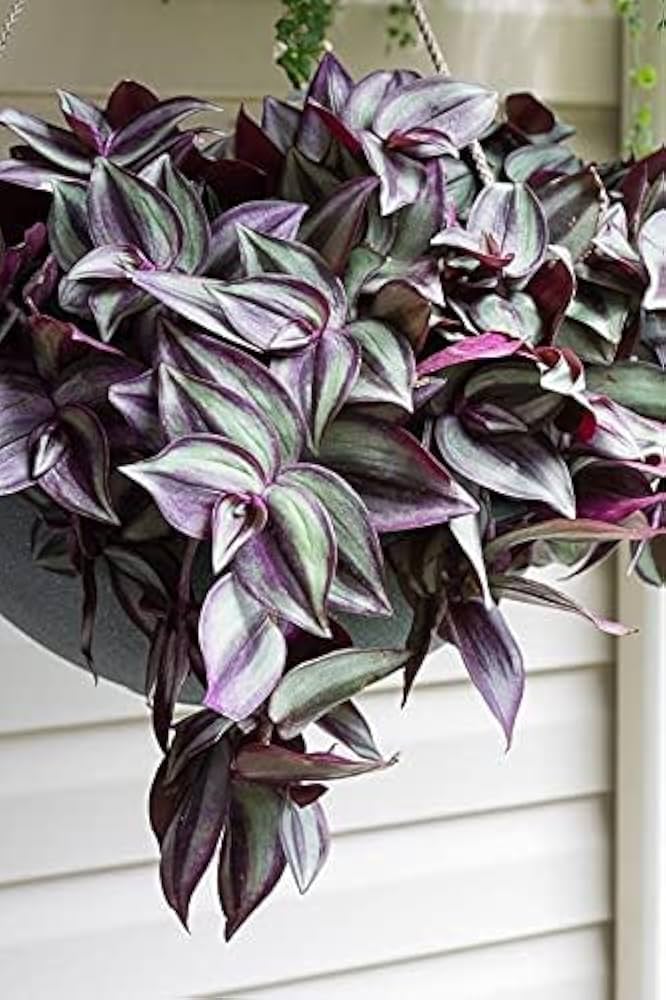
Botanical Characteristics of Wandering Jew Plants
Plant Family and Scientific Origin
The Wandering Jew belongs to the Commelinaceae family. It is a group of flowering plants known for their characteristics. This family contains over 40 genera and approximately 660 species. The Tradescantia is one of the most prominent in the family.
Native Geographical Regions
Tradescantia species are native to the Americas, spanning:
- North America: Southern United States
- Central America: Mexico, Guatemala
- South America: Brazil, Argentina, Paraguay
- Tropical and Subtropical Regions: Ranging from temperate to tropical climates
Physical Characteristics
Leaf Structure
Wandering Jew feature distinctive leaf characteristics:
- Shape: Linear to ovate-lanceolate
- Texture: Smooth, sometimes fuzzy
- Length: Typically 2-4 inches long
- Arrangement: Alternating along stems
Color Variations
The color palette of Wandering Jewis diverse:
- Zebrina: Silver-green stripes
- Pallida: Deep purple to magenta
- Fluminensis: Solid green to variegated green
- Tricolor: Many color combinations
Growth Patterns
Typical growth characteristics include:
- Growth Type: Trailing or spreading
- Annual Growth: 6-12 inches per year
- Stem Characteristics: Soft, somewhat fragile
- Root System: Shallow, fibrous root network

Unique Botanical Adaptations
Wandering Jew Plants demonstrate several fascinating botanical adaptations:
- Water Storage: Succulent-like ability to keep moisture
- Rapid Propagation: Easy root development from stem cuttings
- Light Responsiveness: Leaf color intensity changes with light exposure
- Environmental Resilience: Tolerates varied humidity and temperature conditions
Flowering Characteristics
Primarily grown for their foliage, Wandering JewPlants produce:
- Small, three-petaled flowers
- Colors ranging from white to light purple
- Typically bloom in spring and summer
- Short-lived flower clusters
Genetic Diversity
The Tradescantia genus showcases remarkable genetic diversity, with:
- Over 75 recognized species
- Significant variation in leaf color and pattern
- Ongoing botanical research and hybridization
Ideal Growing Conditions for Wandering Jew Plants
Light Requirements
Light is crucial for Wandering Jew Plants. These plants thrive in specific light conditions:
- Ideal Lighting: Bright, indirect sunlight
- Optimal Location: Near east or west-facing windows
- Direct Sun Tolerance: 2-3 hours of morning sunlight
- Signs of Inadequate Light:
- Leaf color fading
- Leggy, stretched growth
- Reduced leaf variegation
Temperature Preferences
Wandering Jew Plants are tropical plants with specific temperature needs:
- Ideal Temperature Range: 60-80°F (15-27°C)
- Minimum Tolerable Temperature: 50°F (10°C)
- Maximum Tolerable Temperature: 90°F (32°C)
- Winter Care: Protect from cold drafts
- Avoid Sudden Temperature Changes
Humidity Requirements
Humidity plays a critical role in Wandering Jew Plant health:
- Optimal Humidity: 50-60%
- Humidity Methods:
- Pebble trays
- Regular misting
- Grouping with other plants
- Using a humidifier
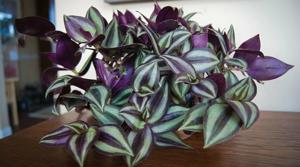
Soil Composition Recommendations
The right soil promotes healthy Wandering Jew Plant growth:
Ideal Soil Mix Components
- 60% Regular potting soil
- 20% Perlite
- 10% Coconut coir
- 10% Organic compost
Soil Characteristics
- pH Range: 6.0-6.5 (Slightly Acidic)
- Drainage: Excellent
- Aeration: High
- Nutrient Retention: Moderate
Pot Selection
Choosing the right pot is important:
- Material: Terracotta or ceramic with drainage holes
- Size: 6-8 inches for mature plants
- Depth: Shallow to moderate root system
- Drainage: Critical for preventing root rot
Important Growing Tips
- Rotate Plant: Ensure even light exposure
- Monitor Soil Moisture: Keep moist, not waterlogged
- Prune Regularly: Encourage bushier growth
- Avoid Compaction: Refresh soil annually
Watering and Maintenance for Wandering Jew Plants
Watering Frequency and Techniques
Wandering Jew Plants require precise watering strategies:
- Ideal Moisture: Consistently moist but not waterlogged
- Watering Frequency:
- Spring/Summer: Every 5-7 days
- Fall/Winter: Every 10-14 days
- Water Quality: Use room temperature, filtered water
Drainage Requirements
Critical drainage factors include:
- Pot Drainage: Essential holes at the bottom
- Soil Drainage: Loose, well-aerated mix
- Drainage Layer: Recommend 1-2 inches of pebbles
- Avoid: Standing water in saucers
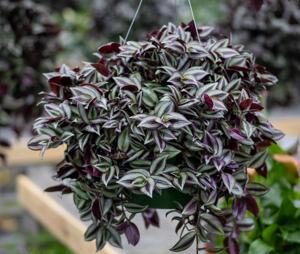
Signs of Watering Issues
Overwatering Symptoms
- Yellowing leaves
- Soft, mushy stems
- Root rot
- Fungus gnats
Underwatering Symptoms
- Crispy, brown leaf edges
- Wilting
- Slow growth
- Leaf drop
Pruning Techniques
Pruning maintains plant health and appearance:
- Frequency: Every 4-6 weeks
- Tools: Sharp, sterilized scissors
- Pruning Goals:
- Encourage bushier growth
- Remove dead/damaged stems
- Control plant size
Propagation Methods
Water Propagation
- Cut 4-6 inch stem sections
- Remove lower leaves
- Place in water
- Roots develop in 7-10 days
- Transplant to soil
Soil Propagation
- Take stem cuttings
- Remove lower leaves
- Dip in rooting hormone
- Plant in moist, well-draining soil
- Maintain high humidity
- Roots develop in 2-3 weeks
Seasonal Care Adjustments
- Spring/Summer: More frequent watering
- Fall/Winter: Reduce watering
- Fertilize: Monthly during growing season
- Reduce: Fertilization in the dormant period
Propagation Tips
- Best Time: Spring and early summer
- Success Rate: 80-90% with proper technique
- Genetic Diversity: Each cutting produces identical plant
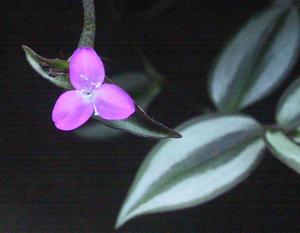
Potential Challenges with Wandering Jew Plants
Pest Problems
Wandering Jew Plants are susceptible to common pests:
Spider Mites
- Tiny red/brown insects
- Cause stippled, discolored leaves
- Thrive in dry conditions
- Prevention:
- Maintain humidity
- Regular plant inspections
- Neem oil treatments
Mealybugs
- White, cottony pest clusters
- Hide in leaf axils and stem joints
- Control Methods:
- Isopropyl alcohol swabs
- Insecticidal soap
- Biological predators
Disease Susceptibility
Common diseases include:
- Root Rot: Caused by overwatering
- Fungal Infections: Result of poor air circulation
- Bacterial Leaf Spot: Appears as dark, water-soaked lesions
Leaf Discoloration Causes
Potential Reasons for Color Changes
- Insufficient light
- Nutrient deficiencies
- Temperature stress
- Improper watering
- Natural aging process
Prevention Strategies
- Quarantine new plants
- Inspect regularly
- Maintain optimal growing conditions
- Use sterile pruning tools
- Avoid overcrowding plants
Environmental Stress Factors
Wandering Jew Plants are sensitive to:
- Sudden temperature changes
- Drafts
- Extreme humidity fluctuations
- Rapid light intensity shifts
Recovery Techniques
Rehabilitation Steps:
- Identify specific plant stress
- Isolate affected plant
- Adjust growing conditions
- Prune damaged sections
- Provide targeted care
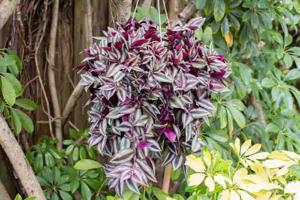
Indoor vs. Outdoor Growing for Wandering Jew Plants
Indoor Growing Tips
The Wandering Jewexcels as indoor houseplants with specific care requirements:
Optimal Indoor Conditions
- Light: Bright, indirect sunlight
- Temperature: 60-80°F (15-27°C)
- Humidity: 50-60%
- Placement: Near east or west-facing windows
- Recommended Spaces:
- Living rooms
- Sunrooms
- Bright kitchen areas
Indoor Care Considerations
- Use well-draining potting mix
- Provide consistent moisture
- Rotate for even growth
- Protect from cold drafts
- Monitor for pest infestations
Outdoor Cultivation Considerations
Outdoor Growing Challenges and Opportunities:
Suitable Outdoor Environments
- USDA Zones: 9-11
- Partial Shade locations
- Protected garden areas
- Tropical and subtropical regions
Outdoor Placement Strategies
- Under tree canopies
- Near north-facing walls
- Sheltered patio spaces
- Hanging basket arrangements
Container Gardening Recommendations
Container Selection
- Materials: Terracotta, ceramic, plastic
- Size: 6-8 inch diameter
- Drainage: Multiple bottom holes
- Color: Light-colored to reduce heat absorption
Container Placement
- Elevated positions
- Movable for temperature protection
- Away from direct afternoon sun
- Protected from strong winds
Transition Techniques
Moving Plants Indoors/Outdoors
- Gradual light exposure
- Temperature acclimation
- Inspect for pests
- Quarantine new additions
- Reduce shock
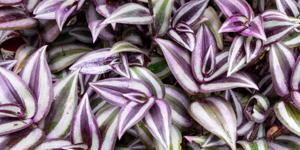
Health and Safety Considerations for Wandering Jew Plants
Toxicity Information
Wandering Jew Plants have specific health and safety considerations:
Toxicity Levels
- Mild Toxicity: Problematic for pets and humans
- Skin Irritation: Possible with direct contact
- Severity: Low to moderate
Pet Safety
Potential Risks for Pets:
- Mild gastrointestinal upset
- Skin irritation
- Potential allergic reactions
- Symptoms:
- Vomiting
- Mild dermatitis
- Temporary discomfort
Child Safety
Precautionary Measures
- Keep plants out of reach
- Educate children about plant handling
- Supervise interaction with plants
- Wear gloves during maintenance
Handling Precautions
Safe Interaction Guidelines:
- Use gardening gloves
- Wash hands after handling
- Avoid touching face/eyes
- Clean pruning tools
- Minimize direct skin contact
Potential Allergic Reactions
Allergenic Components
- Plant sap
- Leaf surfaces
- Pollen
Reaction Indicators:
- Skin redness
- Mild itching
- Localized inflammation
- Temporary discomfort
Medical Recommendations
If Exposure Occurs:
- Wash affected area
- Remove plant material
- Apply cool compress
- Seek medical advice if a severe reaction
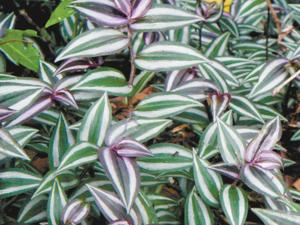
Fertilization Schedules
Nutrient Requirements
- Spring/Summer: Monthly feeding
- NPK Ratio: 10-10-10 or 5-5-5
- Dilution: Half-strength recommended
- Application: Liquid water-soluble fertilizer
Seasonal Nutrient Adjustments
- Growing Season: Higher nitrogen content
- Dormant Period: Minimal to no fertilization
- Micronutrients: Occasional trace element supplements
Seasonal Care Adjustments
Spring Care
- Pruning: Encourage new growth
- Repotting: Optimal time for root division
- Increased Watering: Match growing cycle
Summer Maintenance
- Light Management: Protect from intense midday sun
- Hydration: Consistent moisture
- Pest Monitoring: Increased vigilance
Fall Preparation
- Reduce Fertilization: Prepare for dormancy
- Temperature Acclimation: Gradual indoor transition
- Pruning: Remove damaged/leggy growth
Winter Care
- Minimal Watering: Reduce frequency
- Temperature Control: Maintain consistent warmth
- Humidity: Use pebble trays
- Light: Supplemental grow lights if needed
Decorative Uses for Wandering Jew Plants
Hanging Basket Designs
Ideal Hanging Arrangements:
- Macramé plant hangers
- Ceramic cascading containers
- Tiered hanging systems
- Indoor trailing displays
Hanging Design Principles
- Select lightweight containers
- Ensure strong hanging mechanisms
- Create visual depth and texture
- Mix complementary plant varieties
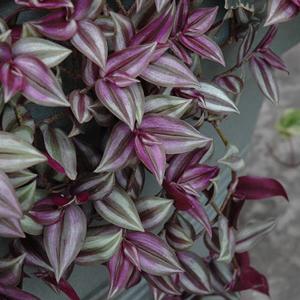
Frequently Asked Questions about Wandering Jew Plants
Top 10 Most Common Questions
1. Are Wandering Jew Plants Toxic?
- Mildly toxic to pets and humans
- Can cause skin irritation
- Minimal serious health risks
- Recommendation: Keep away from children and pets
2. How Often Should I Water My Plant?
- Growing Season: Every 5-7 days
- Winter: Every 10-14 days
- Key Indicator: Top inch of soil should be dry
- Avoid: Overwatering and standing water
3. Can I Grow Wandering Jew Plants Outdoors?
- Suitable Zones: 9-11
- Best Locations: Partial shade
- Considerations:
- Protect from the direct afternoon sun
- Ensure proper drainage
- Monitor temperature
4. How Do I Propagate Wandering Jew Plants?
- Methods:
- Water propagation
- Soil propagation
- Stem cuttings
- Success Rate: 80-90%
- Best Season: Spring and early summer
5. Why Are My Plant’s Leaves Losing Color?
Potential Causes:
- Insufficient light
- Nutrient deficiencies
- Temperature stress
- Improper watering
- Natural aging process
6. What Type of Soil is Best?
- Composition:
- 60% potting soil
- 20% perlite
- 10% coconut coir
- 10% organic compost
- pH Range: 6.0-6.5
- Drainage: Excellent
7. How Much Light Do They Need?
- Ideal: Bright, indirect sunlight
- Duration: 2-3 hours morning sun
- Avoid: Direct, intense afternoon light
- Signs of Issues:
- Pale leaves
- Leggy growth
- Color fading
8. Which Varieties Are Most Popular?
- Tradescantia Zebrina: Silver-green stripes
- Tradescantia Pallida: Deep purple leaves
- Tradescantia Fluminensis: Solid green
9. How Do I Deal with Pests?
- Common Pests:
- Spider mites
- Mealybugs
- Prevention:
- Maintain humidity
- Regular inspections
- Neem oil treatments
- Isopropyl alcohol swabs
10. What Temperature Do They Prefer?
- Ideal Range: 60-80°F (15-27°C)
- Minimum: 50°F (10°C)
- Maximum: 90°F (32°C)
- Avoid: Sudden temperature changes
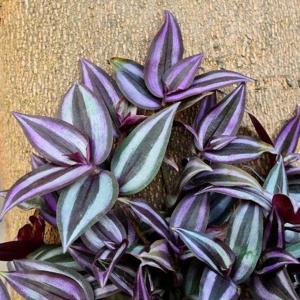
Conclusion: Mastering Wandering Jew Plant Care
Recap of Key Care Points
Wandering Jew Plants represent a fascinating addition to any plant collection. Their characteristics and challenges make for stunning botanical specimens.
Essential Care Principles
Key Takeaways
- Provide bright, indirect light
- Maintain consistent moisture
- Use well-draining soil
- Prune regularly
- Monitor for pests and diseases